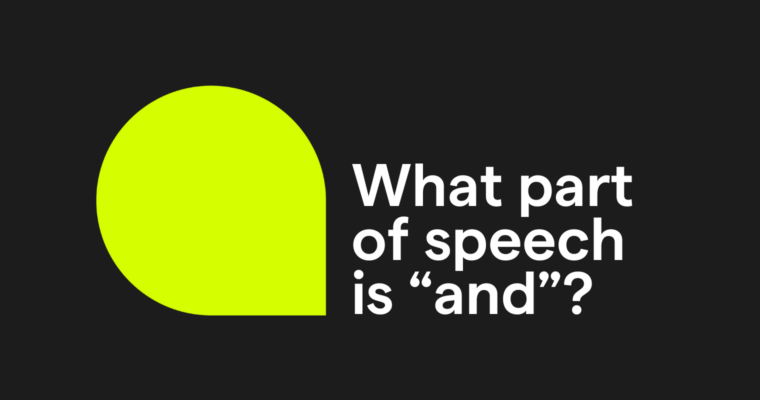
A possessive noun is a noun that shows ownership, usually identified by ’s. For example, in the phrase the student’s notes, the word student’s is a possessive noun, showing that the notes belong to the student.
Some parts of possessive nouns can be confusing, such as how to make a noun ending in s possessive, or what the correct possessive form of plural nouns is. Below, we explain everything you need to know about possessive nouns, including possessive noun examples. But first, let’s answer the question “What does possessive mean?”
What is a possessive noun?
Possessive nouns are nouns that show ownership or a direct connection. Typically, singular possessive nouns use an apostrophe ( ’ ) and the letter s at the end of the word to take the possessive form. Almost any noun can become possessive, even abstract nouns.
- dog -> dog’s
- Maria -> Maria’s
- the Empire State Building -> the Empire State Building’s
Pay close attention to that apostrophe: in English, we also add s to the end of words to make them plural. So the apostrophe can determine whether a noun is possessive or plural, as in the case with boys versus boy’s. In these examples, boys means more than one boy (plural), but boy’s means one boy has ownership over something (singular possessive).
Possessive nouns are followed by the object of the possessive. In this possessive example, the desk is the thing that Kali owns because it comes directly after the possessive noun:
- Kali’s desk
In other words, Kali owns the desk. The object of the possessive is the first noun after the possessive noun, usually immediately afterward. However, you can still include some adjectives to describe the object of the possessive.
- Kali’s messy desk
You can also show ownership or connection without possessive nouns by using the preposition of:
- the desk of Kali
In this case, the owner (Kali) is the object of a prepositional phrase with of, and the thing that is owned (the desk) comes first. When using this construction, you do not need an apostrophe or the letter s.
There are four types of possessive nouns: singular possessive nouns, plural possessive nouns, possessive pronouns, and irregular possessive nouns. We discuss each individually, including possessive noun examples.
What is possessive form?
Before we get into the specifics of possessive nouns, let’s define possessive in general when it comes to grammar. The possessive case is used to show ownership of something (Sanjay’s phone) or a direct connection to something (Sanjay’s sister).
Let’s look at some examples in an actual sentence.
- Aiguo grabbed his hat from Tony’s car.
There are two possessives in this sentence. The possessive adjective his, which reflects Aiguo, shows ownership of the hat. The possessive noun Tony’s, which is identified by the ’s at the end, shows that the car belongs to Tony.
What is a possessive adjective?
Like possessive nouns, possessive adjectives also show ownership or direct connection. Possessive adjectives correspond to the English pronouns, matching person, gender, and number.
| Singular | Plural | |
| First Person | my | our |
| Second Person | your | your |
| Third Person | his, her, their, its | their |
Additionally, the possessive adjective whose acts as the possessive form of the relative pronoun who, and it can introduce relative phrases and clauses.
Unlike the possessive nouns below, possessive adjectives do not use apostrophes. This is especially pertinent for the possessive adjective its, which is notoriously confused with the contraction it’s, meaning it is.
In this guide we focus specifically on possessive nouns, so we won’t talk much about these possessive adjectives. We thought it’d be helpful to include them here just for comparison.
Singular possessive nouns
The most basic form of possessive nouns is the singular possessive noun. These are standard singular nouns that become possessive by adding an apostrophe and the letter s.
[singular noun] + [’s]
Nouns that end in s, especially proper nouns, can cause a lot of confusion. However, it’s OK to add an ’s after an s, as long as the noun is singular (the boss’s chair).
Keep in mind that this includes both mass nouns and collective nouns. Mass nouns are nouns that are uncountable and don’t have a plural form, like sand or money. Collective nouns are singular nouns that represent multiple things, like team or family.
Singular possessive noun examples
- Carlos’s school
- team’s captain
- love’s labor
Plural possessive nouns
Plural nouns are more difficult to make possessive because they already have an s at the end. As you can see by the plural possessive examples below, the proper construction is to add only an apostrophe to the end.
[plural noun] + [ ’ ]
This is the way for plural nouns that end in s, although proper nouns and general nouns that end in s, such as class or Carlos, still use ’s. However, irregular plural nouns, like children, do not always use this construction (see below).
Plural possessive noun examples
- bottles’ shelf
- teams’ tournament
- three years’ experience
Possessive pronouns
Possessive pronouns refer to the noun form of pronouns that show possession. Like regular pronouns, they are used in place of other nouns to avoid repetition.
Unlike other possessive nouns, possessive pronouns do not come before the object of the possessive. Usually, what the pronoun refers to is mentioned earlier, and we use the possessive pronoun instead of repeating the original word.
| Singular | Plural | |
| First Person | mine | ours |
| Second Person | yours | yours |
| Third Person | his, hers, theirs | theirs |
Be careful not to confuse possessive pronouns with the possessive adjectives mentioned above. Possessive pronouns act as nouns, not adjectives. You must use them as nouns.
Possessive pronouns examples
- I don’t have a calculator. Can I borrow yours?
- I wish I had hair like hers.
- Sarah’s parking spot is closer than mine is.
Irregular possessive nouns
Not all nouns take a plural form by adding s. Irregular plural nouns, like children or teeth, each have unique plural forms. The possessive form of irregular plural nouns depends on whether or not they already end in an s.
- If the irregular plural noun has an s at the end, add only an apostrophe.
- If the irregular plural noun does not have an s at the end, add both an apostrophe and an s.
Irregular possessive nouns examples
- geese’s flock (singular: goose’s flock)
- wolves’ den (singular: wolf’s den)
- heroes’ feast (singular: hero’s feast)
Possessive noun rules
1 How to form possessives with two or more nouns
What if something is owned by more than one person? There are two ways to handle possessives with multiple nouns, known as compound possessives. The correct method depends on whether the nouns relate to the same thing or whether they each relate to different things.
If multiple nouns own or connect to the same object, only the last one in the series is possessive.
If multiple nouns each own different versions of the same thing, make each separate noun possessive.
- science teacher’s and art teacher’s rooms
- America’s and Canada’s political policies
Notice how, in these examples, the objects of the possessive are also plural (rooms and policies) because there’s more than one.
2 How to form possessives with hyphenated and compound nouns
Hyphenated and compound nouns can seem tricky, but they’re actually pretty simple. If they’re singular, just add an apostrophe and an s to the final word.
- trash can’s lid
- mother-in-law’s cooking
If the nouns are plural with a regular s at the end, add only an apostrophe to the final word.
- news blogs’ articles
- X-rays’ images
However, if the word is plural without an s at the end, add both an apostrophe and an s to the final word.
- mothers-in-law’s behaviors
3 How to add emphasis with the adjective own
Use the adjective own before the object of the possessive to add a special emphasis. This comes in handy if you want to draw attention to the connection or ownership to better communicate your meaning.
- Abel’s own brother betrayed him!
- Napoleon’s own mansion is now a national museum.
Possessive noun FAQs
What is a possessive noun?
A possessive noun is a noun form used to show ownership or a direct connection. It’s commonly recognized by the apostrophe and letter s at the end, as in Charlotte’s web or the tree’s branches.
What are the different kinds of possessive nouns?
There are four kinds of possessive nouns: singular possessive nouns (one dog’s bone), plural possessive nouns (many dogs’ bones), possessive pronouns (bones of theirs), and irregular possessive nouns (the wolves’ bones).
When should you use possessive nouns?
Possessive nouns are used to show ownership or a direct connection, usually coming directly in front of the object of ownership. Alternatively, you can show ownership with the preposition of, as in the bone of the dog.





